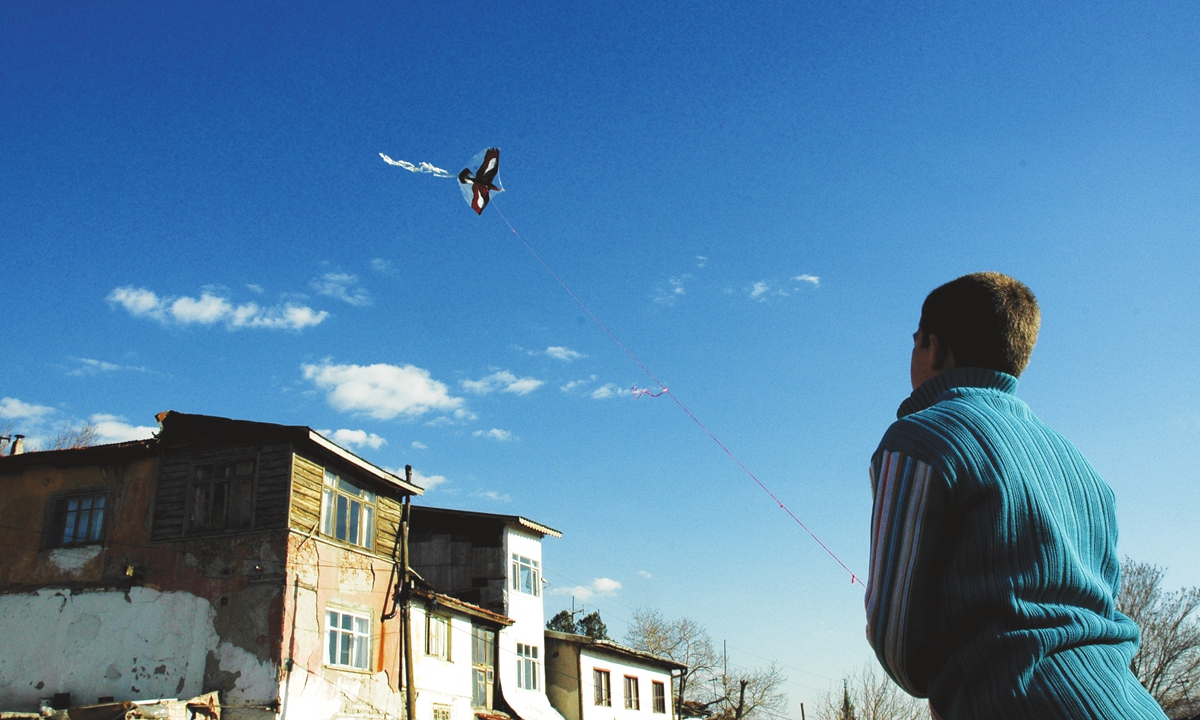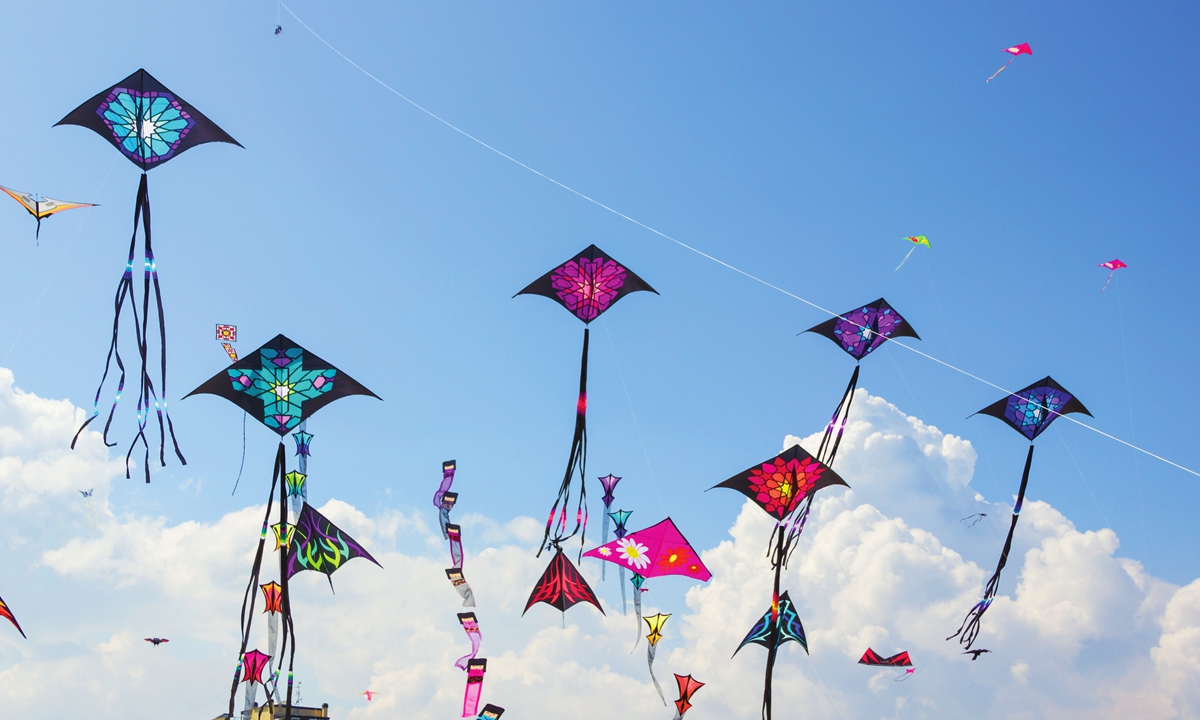Turkey’s kite museum seeks to survive as COVID-19 hits
Source: Xinhua Published: 2020/10/18 19:48:40

A child flies a kite in Ankara, Turkey. Top: Colorful kites take to the sky during a kite festival. Photos: IC

Turkey's single kite museum in the Uskudar district on the Asian side of Istanbul has been trying to stand on its own feet amid the COVID-19 pandemic restrictions.
"I wouldn't think that I would find a museum dedicated to kites in the city," he told the Xinhua News Agency while gazing at the colorful kites in different shapes with admiration.
Mehmet Naci Akoz, president of the Istanbul Kite Association and founder of the museum, told Xinhua that he created the 3,000-piece collection over 40 years and opened the museum in 2005.
He visited over 35 countries to gather the kites to be displayed in the museum.
"I was most impressed by the ancient kite culture of China, dating back to 300 BC," Akoz said in front of several picturesque three-dimensional Chinese kites located at the museum's most jazzy spot.
He went to China several times to collect some fascinating models for the gallery.
"Chinese people created thousands of models in shapes of everything that comes to mind," Akoz continued, saying that "they made kites of a bicycle, wheelbarrow, and train with smoke coming out."
At the entrance of the museum, a giant Chinese dragon head with a 28-meter-long tail swinging from the ceiling catches the eye.
"Here, you can only see 16 meters of its tail. The rest is on the shelves as we don't have enough space to display it all," he said.
A tortoise hanging on the wall is another model of a 3D Chinese kite.
"It is made out of bamboo laths and covered with polyester. It is quite light, and it flies very comfortably," Akoz noted.
One of the most attractive Chinese kites in the collection is one depicted as the head of a girl. Her long hair is the tail of the kite. One big eye and lip were disproportionately dilated on purpose.
"When floating in the air, she twinkles and sends kisses," he continued.
Liu Zhiping, an organizer of the Weifang International Kite Festival, a globally known event in Weifang in East China's Shandong Province, presented this kite as a gift to Akoz several years ago.
"Liu Zhiping is a highly prominent character who has worked hard to promote the Chinese kite culture to the world and I am proud that he is my friend," he said.
In Akoz's view, kite flying is generally considered as a child's activity in Turkey. He said the art of designing a kite is a neglected area, and therefore, many ancient Turkish models of kites disappeared because of this neglect.
Kite culture arrived in Anatolia in the 13th century during the Ottoman era, but never became popular as in China, according to him.
Akoz has been working hard to introduce this art to Turkish children by holding workshops on the ground floor of the museum.
"We used to organize daily workshops for up to 100 pupils at once. Our weekly schedule used to be full before the pandemic," he said.
"But when the outbreak erupted in mid-March in Turkey, my sole source of income came to a full stop," he complained about his financial troubles, noting that Ibrahim was the only visitor to the museum for the last two days.
For the future, he keeps his hopes reserved and said, "even if the pandemic ends, there is no space left in this megalopolis for kites. Therefore, I am calling for the city authorities to open some green areas for children and support the art of kites."
Newspaper headline: Highs and lows
Posted in: CULTURE & LEISURE,ARTS FOCUS